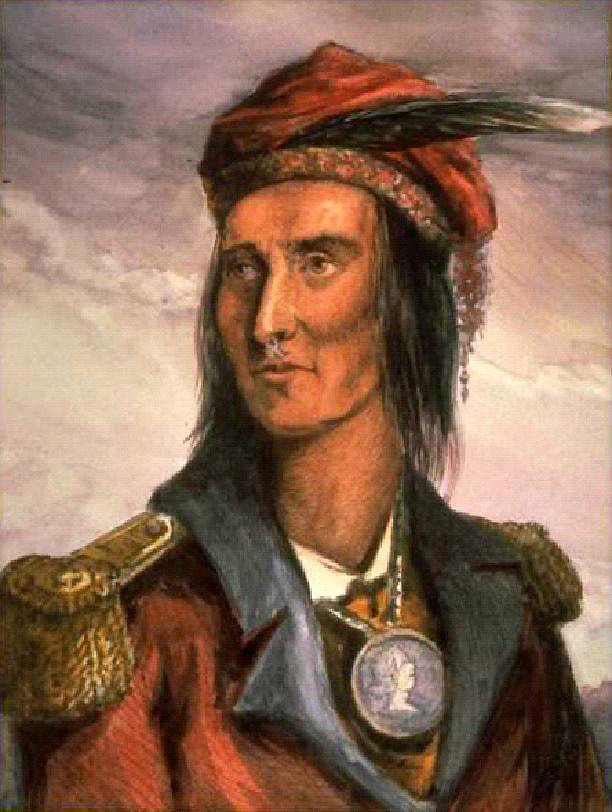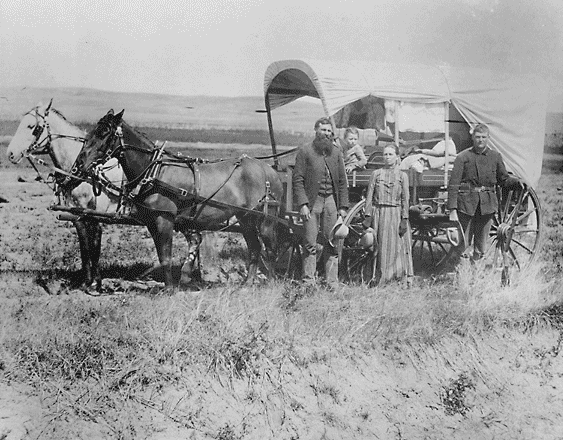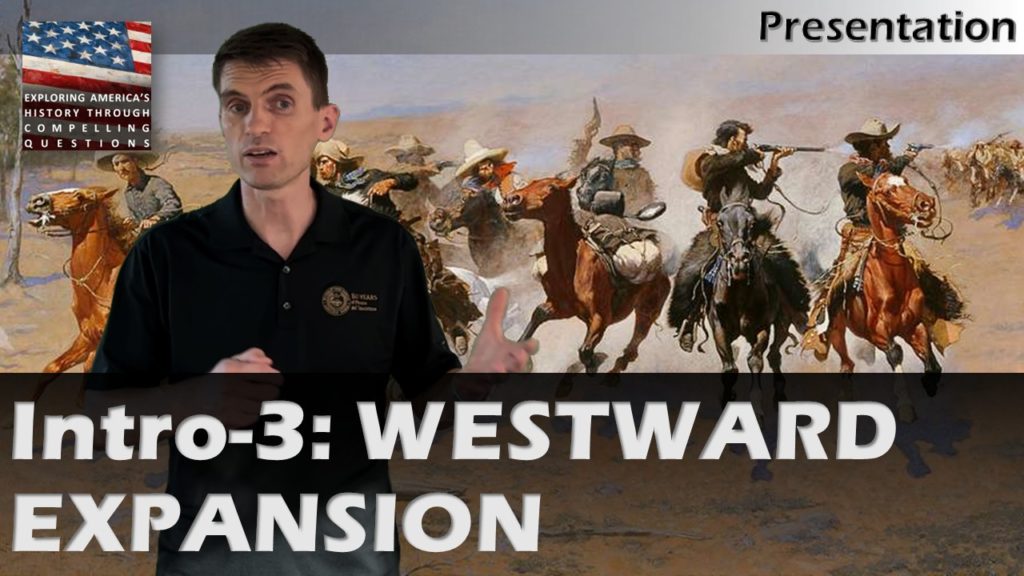
JUMP TO

TRANSLATE

OTHER VERSIONS OF THIS READING
INTRODUCTION
Europeans first landed in the Americas along the Atlantic Coast. By the time the United States became independent from Britain, White towns and farms were as far west as the Appalachian Mountains. By the middle of the 1800s, most Native American tribes had to move to the west side of the Mississippi River, and by 1890 White Americans lived everywhere from the Atlantic to the Pacific Oceans. It took just over 100 years for the United States to grow all the way across North America.
In 1845, John O’Sullivan, a New York newspaper editor, came up with the phrase manifest destiny. The term described the very popular idea among White Americans that God liked the United States and that it was the fate of the country to control all of North America. Like the Massachusetts Puritans who wanted to build a city upon a hill, many brave pioneers believed that their culture and religion were better than those of the Native Americans or Mexicans who lived in the West. They thought it was their job to spread their way of life from sea to sea.
O’Sullivan’s term manifest destiny combines two key ideas. First that the spread of White culture was what God wanted, and second that it was going to happen to matter what. But was this really true? Did the march of White culture toward the Pacific Ocean happen because of destiny, or was it planned, the result of thousands of choices? It is easy to study history and see what did happen as what must have happened. What do you think? Was the spread of the United States across the continent destiny or design?
EXPANSION IN THE EARLY 1800s
Thomas Jefferson bought Louisiana from France in 1803. The land he bought was much larger than the State of Louisiana that is on maps today. Actually, Jefferson doubled the size of the country. To find out what was on the land he had just bought, he sent Lewis and Clark on a multi-year trip to the Pacific Ocean and back. Their Corps of Discovery was supposed to map the land, study the animals and plants, and make friends with the Native Americans. They were helped by Sacagawea, a young mother who helped translate along the way.
The Lewis and Clark Expedition may have been peaceful, but most meetings between White Americans and Native Americans were not. Natives had been fighting for 60 years to try to keep their lands, and they mostly were losing. They had fought in the Seven Years War, the Revolution and during the War of 1812.
 Secondary Source: Painting
Secondary Source: Painting
This painting was created based on drawings of Tecumseh from his lifetime. Interestingly he wears a mix of both traditional and European clothing, including a medal received as a sign of friendship.
Between the Revolution and the War of 1812, Tecumseh and his brother “The Prophet” Tenskwatawa had tried to get the tribes along the Mississippi River to work together to form a wall against Whites who were moving into their land. They ended up fighting American soldiers at the Battle of Tippecanoe led by William Henry Harrison and lost. Tecumseh left for Canada, Harrison became popular and became president, and White continued moving west.
TEXAS AND MEXICO
Texas used to be part of New Spain, and then Mexico after Mexico won independence. Mexico invited American settlers to move into Texas to increase the non-Native population. These were Tejanos, and they brought their slaves with them. When Mexico made slavery illegal, the Tejanos decided to fight for independence from Mexico. They did not want to give up slavery, they did not speak Spanish, and they were not Catholic like most other Mexicans.
The Texas Revolution was a win for the Tejanos. After the loss of the Alamo, they beat Mexican leader Santa Anna and forced him to let Texas become independent. Sam Houston became the president of the new Republic of Texas. Almost right away they asked Congress to annex Texas, but because American leaders were worried about balancing slave and free states in the Senate, Texas was independent for ten years.
Americans started to believe in the idea of manifest destiny. They thought that God wanted their country to cover all of North America from the Atlantic to the Pacific Oceans. They chose James K. Polk to be president in 1844. He was a strong believer in this idea and promised to make Texas a part of the United States. He also said he would go to war with Great Britain over control of the Oregon Territory.
 Secondary Source: Map
Secondary Source: Map
All the various territorial acquisitions that formed the final lower 48 states.
Polk annexed Texas and then started a war with Mexico by sending American troops across the Nueces River into land both the United States and Mexico said was theirs. Some Americans thought a war with Mexico was wrong, but many others wanted land in the West and liked what Polk had done. The war went well. American soldiers invaded Mexico, beat Santa Anna and forced him to give up the Mexican Cession, which makes up most or all of what is now the states of Arizona, California, New Mexico, Nevada and Utah.
The Mexican-American War led to some important changes. Zachary Taylor who was the hero of the Mexican-American War became president. The young officers in the war later led the armies of the Civil War. Arguments about letting slavery into the new lands helped lead the Civil War.
 Primary Source: Photograph
Primary Source: Photograph
A homesteading family in Nebraska in 1866.
THE LAST OF THE INDIAN WARS
As White homesteaders, or farmers, moved into the Great Planes, they met the last of the free Native American tribes. Some tribes moved without fighting. The government promised money and land in the First Treaty of Fort Laramie. But in the late 1800s, the army fought wars with the tribes that did not want to move.
The Sioux were a large group of tribes living in what is now the Dakotas and Montana. Fights between Sioux and settlers led to the Sand Creek Massacre by the army. The government often broke promises it made to the Sioux. So, the Sioux met up to become a large fighting force. Their leaders were Sitting Bull and Crazy Horse. In 1876 they beat General Custer’s soldiers at the Battle of Little Big Horn. In the end, however, the army was able to force all Native tribes onto reservations.
Key to the life of the plains tribes was the buffalo. They used it for its meat, fur, bone, and it was central to their religion also. Whites understood this and began to kill all the buffalo. They knew that if there were no buffalo, the Native Americans would not be able to live on their own and would have to move to reservations.
Congress wanted the Native Americans to live more like White Americans, so they wrote the Dawes Act. This law split up Native land into small parts so that individuals owned their own land instead of having all Native Americans share the land. Most of the time, the land given to the Native Americans for reservations was not good for farming, and these nomads-turned-farmers could not grow enough food. They needed the government for food. Depression and alcoholism grew. The government was able to destroy the old Native way of life.
The final fight of the Indian Wars was at Wounded Knee. A new religious movement had become popular with Native American in the West. It said that if they joined in a Ghost Dance, the Whites would disappear, and the buffalo would return. A group of mostly women, children and old men who did the Ghost Dance were killed by the army in 1890.
In the years that followed, boarding schools were opened where Native Children were taught English and White culture. The Carlisle Indian School was the most famous of these. It was not until the 1940s that this process of forced Americanization ended.
CONCLUSION
White culture spread out from the Atlantic to the Pacific, slowly at first, and then quickly in the second half of the 1800s. Everywhere White settlers went, Native Americans tried to hold on to their land, but it never worked for very long. Certainly, there were some victories like at Little Big Horn. But they never changed the final end.
Was this destiny? Was it that once Europeans had landed at Plymouth and Jamestown that these tiny towns would end up becoming a country that would replace a whole continent of Native cultures?
Or, on the other hand, was it design? Was the westward growth of White culture made up of many decisions to take land, some big like the Louisiana Purchase or the choice to go to war with Mexico, and many small, such as the choice of a single family to cross the plains on a wagon train.
What do you think? Was the spread of the United States from sea to shining sea fated to happen, or a choice that could have been made differently?
CONTINUE READING

SUMMARY
BIG IDEA: Since the first English settlements along the Atlantic Coast, White Americans spread westward and were involved in conflicts with both Native Americans and Mexicans who blocked the spread of the United States across the continent.
Native Americans had been fighting White expansion for many years. Their primary goal was preserving their land which was the principal factor in their decisions about who to side with the Seven Years War, American Revolution, War of 1812, and in their own conflicts with White Americans.
Americans who moved to Texas initiated a war for independence from Mexico, and later President Polk launched a war against Mexico that resulted in Mexico giving half of its land to the United States.
Hispanics who found themselves in the United States after the Mexican-American War often lost their land to Whites. Some fought back, but they generally lost out as Whites pushed west.
There were many groups of people who defined the character of the West. Mountain men, miners were some of the first Whites to move into the West. Later ranchers and eventually pioneer farmers moved west. As Whites settled in new territories, railroads were built to connect them.
The last violent conflicts between Whites and independent Native Americans were in the late 1800s on the Great Plains. Ultimately the army defeated the last of the tribes and forced them to move to reservations where official government policy attempted to destroy Native culture.

VOCABULARY
![]()
PEOPLE AND GROUPS
Lewis and Clark: Explores who were sent by President Jefferson into the new Louisiana Purchase all the way to the Pacific Ocean. They tried to establish peaceful relationships with Native Americans, created maps, and recorded the plants and animals they found.
Tecumseh: Native American political leader who organized a campaign to unite the tribes up and down the Mississippi River against White expansion during the early 1800s. His army was defeated at the Battle of Tippecanoe in 1811.
Homesteaders: White American families who moved into the Great Plains of the West, built farms, and settled the last of the frontier.
Sioux: Group of related Native American tribes who lived in and around the area that is now North and South Dakota. They mounted some of the last and most fierce resistance to White expansion and the reservation system.
![]()
KEY IDEAS
Manifest Destiny: Belief held by many Americans, especially in the 1800s that it was clear that the nation would spread from the Atlantic to the Pacific Ocean. This belief fueled expansion, including migration of pioneers, war with Mexico and Native Americans, and a belief in the superiority of White, Christian culture.
![]()
EVENTS
Louisiana Purchase: 1803 purchase of land from France by President Jefferson which doubled the size of the nation. It was an example of a loose interpretation of the Constitution despite Jefferson’s preference for strict interpretation.
Texas Revolution: War between American-born Texans and the Mexican government under the command of Santa Anna in 1835 and 1836 that resulted in independence for Texas. It was fought largely due to disagreements about culture, language, religion and especially slavery.
Mexican-American War: War between the United States and Mexico between 1846 and 1848. It was a major victory for the United States and the subsequent Treaty of Guadalupe Hidalgo resulted in the Mexican Cession, the land that became the modern states of New Mexico, Arizona, Nevada, California and part of Utah.
Battle of Little Bighorn: 1876 battle between the Sioux nations under the command of Sitting Bull and Crazy Horse and the 7th Cavalry under the command of George Custer. It was a rare victory for the Native Americans.
Massacre at Wounded Knee: Last of the violent conflicts between government troops and Native Americans at the end of the 1800s. In December 1890, the army massacred between 150 and 300 Lakota Sioux who had participated in the Ghost Dance.
![]()
ANIMALS
Bison/Buffalo: Large land animal that roamed the Great Plains in massive herds and provided the basis for the nomadic lifestyle of the tribes of the plains. They were nearly driven to extinction by Whites who saw their destruction as synonymous with destruction of Native American culture.


